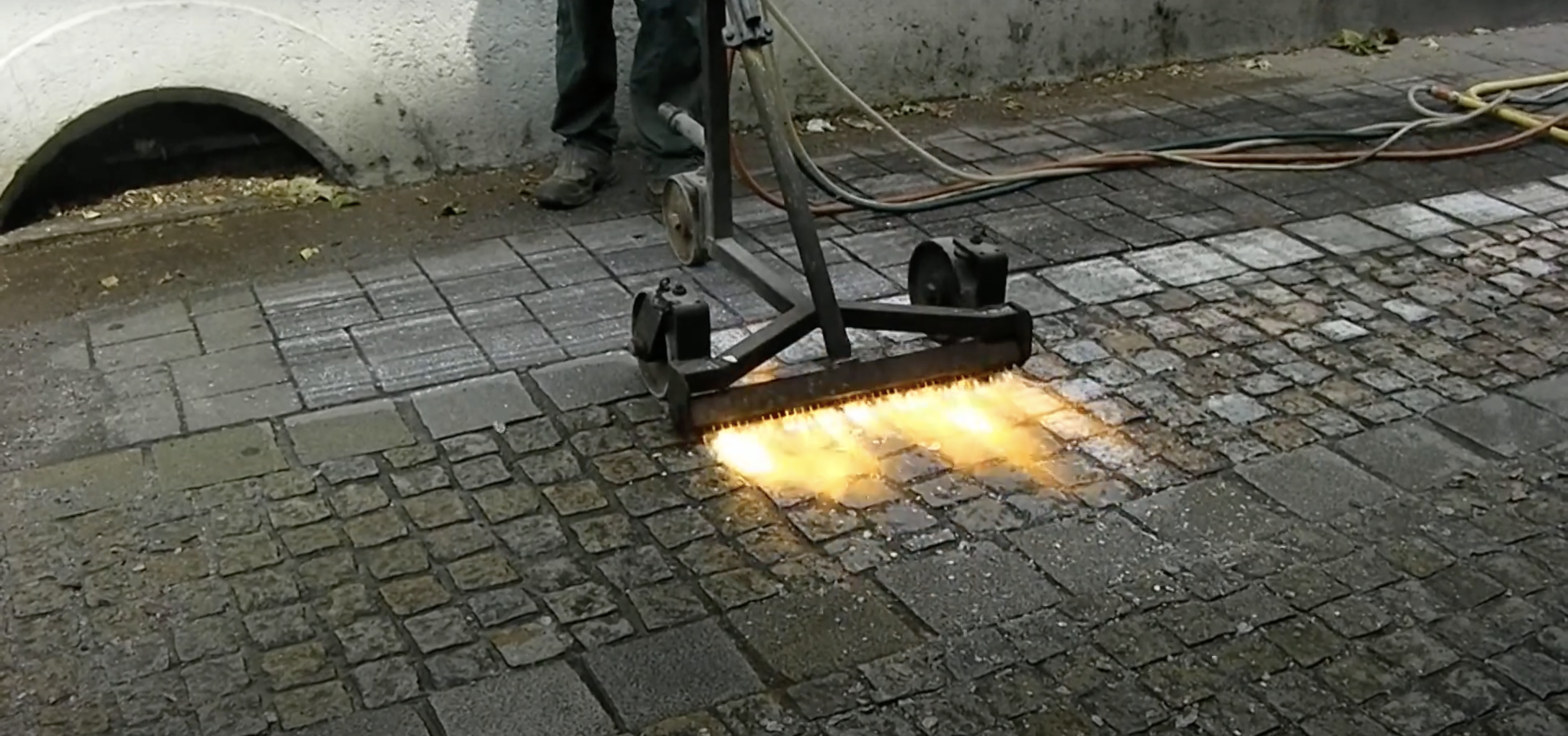Public roads and works
What is paving stone flame treatment?

This surface treatment restores roughness enhancing the natural texture of the stone.
The thermal shock caused by the application of an oxy-fuel flame during paving stone flame treatment causes the surface of the paving stone to shatter.
Before flame treating paving stones, they should be made “reactive” to the flame treatment process. Some paving stones do not react at all to the thermal shock caused by flame application, and some granite reacts by turning slightly pink.
This surface finish is very popular for roads and in the building industry because of its non-slip properties.
The process can be applied to natural stone, marble, and granite.
Paving stone flame treatment: how do your streets benefit?
Pollution, traffic, and frequent cleaning of paving stones laid in the streets decrease the stone roughness which can become slippery in the course of time. Today, we are able to use flame application on the spot which restores the anti-slip properties the paving course had at the time of installation. In this way, there is no need to block off the streets and passages for what can be very long periods of time, and work can be organized in sections to limit the inconvenience to users as much as possible. This operation can be done both on large areas (squares, pavements …) and small areas (kerbs, manholes …).



